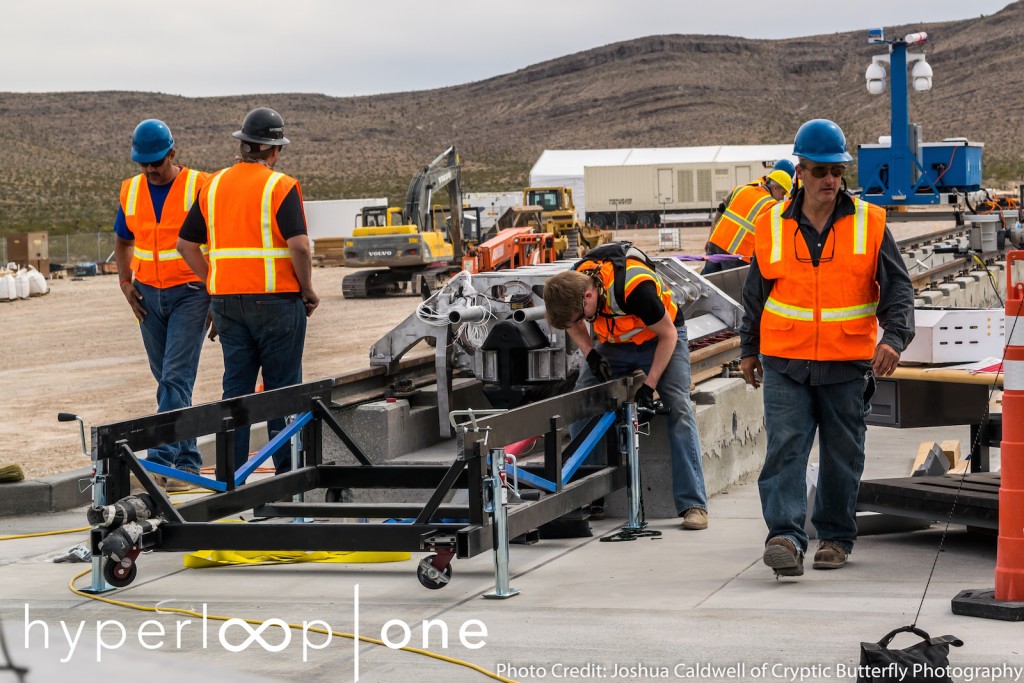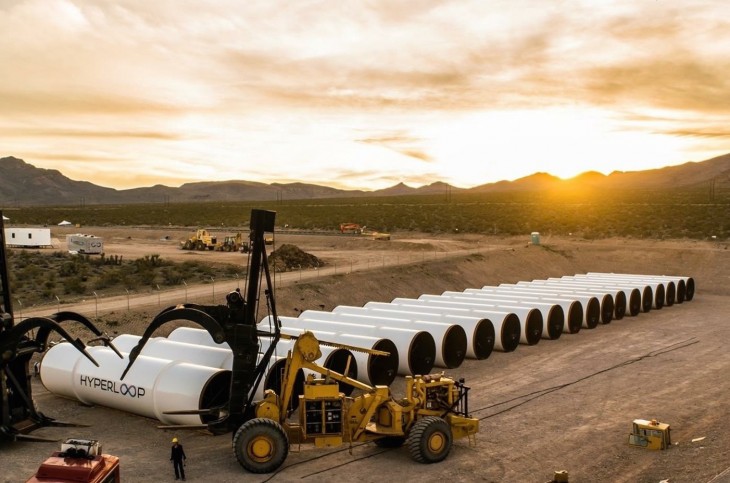Hyperloop One performed a propulsion open-air test of hyperloop technology in the Nevada desert, only 30 miles from the Las Vegas strip. This is the first demonstration of a working hyperloop component, since Elon Musk proposed it in 2013 as a technology that could revolutionize public and commercial transportation.
What is Hyperloop
“Is there truly a new mode of transport – a fifth mode after planes, trains, cars and boats – that meets those criteria and is practical to implement?” wrote Elon Musk in his presentation of the technology. “The Hyperloop (or something similar) is, in my opinion, the right solution for the specific case of high traffic city pairs [sic] that are less than about 1500 km or 900 miles apart.”
He explained that Hyperloop consists of a low pressure tube with capsules that are transported at both low and high speeds throughout the length of the tube. The capsules are supported on a cushion of air, featuring pressurized air and aerodynamic lift. The capsules are accelerated via a magnetic linear accelerator affixed at various stations on the low pressure tube with rotors contained in each capsule. Passengers may enter and exit Hyperloop at stations located either at the ends of the tube, or branches along the tube length. (His complete presentation, including a breakdown of the technology, is available online.)
Hyperloop is designed to be energy-elegant, have no direct carbon emissions, and to be safer than a train (no driver to make an error and no weather to worry about).
“There’s something about the idea of the Hyperloop that captures the imagination of ambitious engineers,” said Shervin Pishevar, a cofounder and executive chairman of Hyperloop One. “The benefits of Hyperloop are clear: efficient, on-demand, safe, green and of course fast travel. But the idea of being on the ground floor of commercializing the next mode of transportation goes beyond the delivery of those values.”
The Propulsion Open-Air Test
Hyperloop One was created to specifically meet the challenges of developing hyperloop technology into an operational transportation system and has been working relentlessly at innovation campus located in the Downtown Los Angeles Arts District. Every aspect of the hyperloop system is being invented and tested within the walls of the 55,000 square foot office and light manufacturing area.
To showcase the infrastructure that Hyperloop One has been developing, the company conducted the propulsion open-air test, which included the construction of a 300 meter track to propel a 1,500 lb aluminum centipede sled. The trial run — which only took a few seconds — was considered a huge success, with the sled achieving a speed of zero to 60 mph in 1.1 seconds, before stopping in a big plume of sand.

“What was surreal about the whole thing is how far we’ve come so quickly. Hyperloop One is now a team of 150 people in downtown Los Angeles and Las Vegas, but we were a handful of people in Brogan’s LA garage less than two years ago,” said Pishevar. “I’ve been lucky to have been involved in dozens of startups over the years, including lightning fast scale-up companies like Uber, but I’ve never seen a company move this fast. We’re living in an incredible window of time in human history, when teams of entrepreneurs and engineers can dream big and execute on their vision at an unprecedented scale. Private companies are now doing the things that nations used to do.”
At the same time the propulsion open-air test took place, Hyperloop One announced that it closed a deal to receive US$80 million in financing to support development of the project. The company is also working to form a new global partner ecosystem, featuring world leaders in transportation engineering, architecture, infrastructure strategy and financing, construction, and operations. These companies includ AECOM, AMBERG Group, ARCTURAN SUSTAINABLE CARGO, ARUP, Bjarke Ingels Group, Cargo Sous Terrain, Deutsche Bahn Engineering & Consulting, FS LINKS, GRID, KPMG, and SYSTRA.
Hyperloop One aims to have its first tubes in ground in two to three years, with the system being operational by 2020 or 2021. The location of the first hyperloop tube system is yet to be determined.

